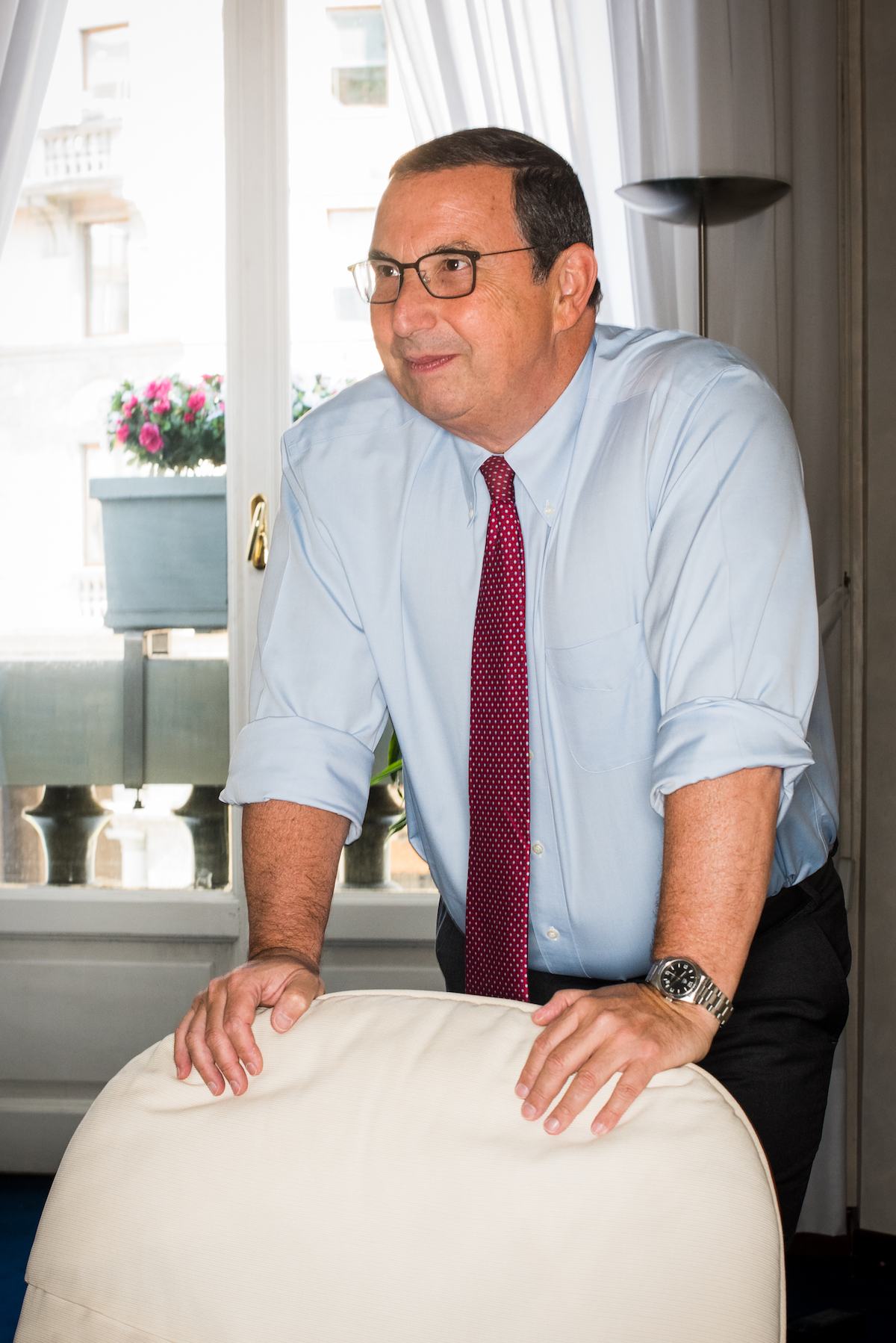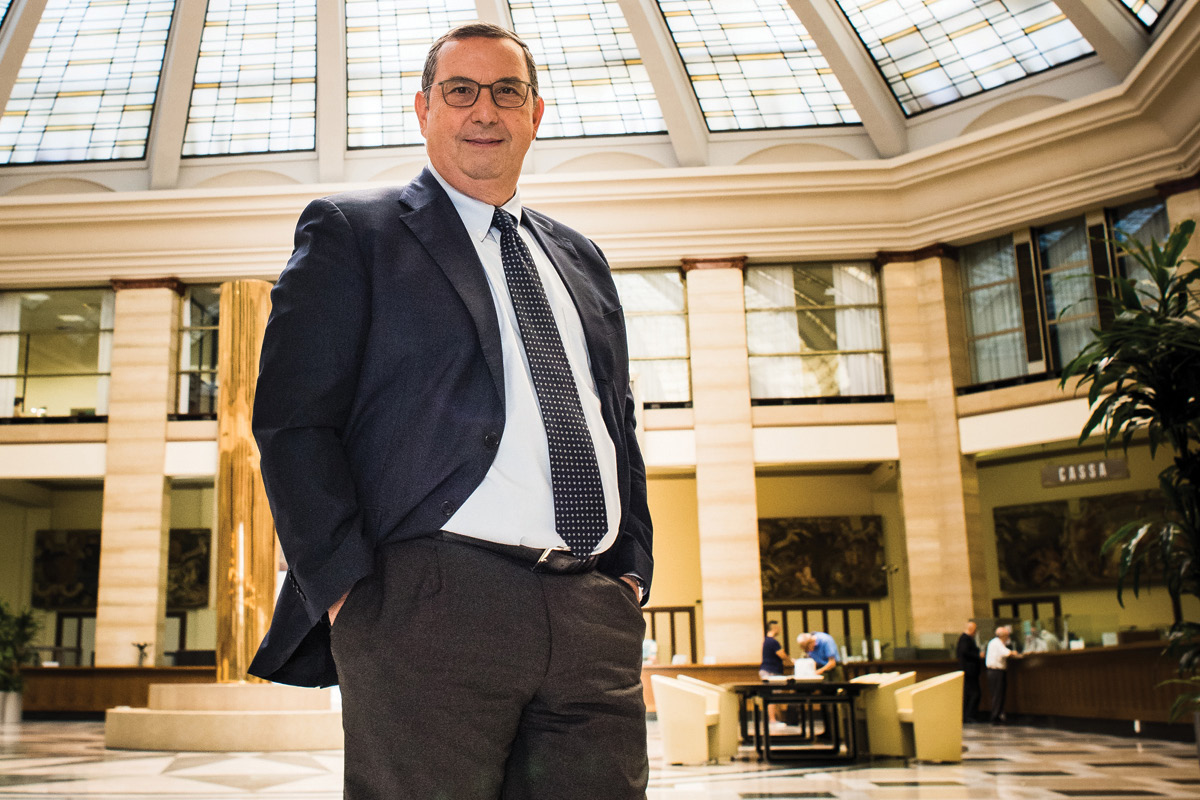The proposed merger between Banco Popolare and Banca Popolare di Milano surpassed the two-thirds majority required for approval in October last year. As a result, the newly merged entity, Banco BPM, had overtaken Monte dei Paschi di Siena to become Italy’s third largest bank, after Intesa Sanpaolo and UniCredit.
It also provided a welcome boost for the then embattled Italian Prime Minister, Matteo Renzi, who had backed the deal and was staking his political credibility in a referendum proposing to change Italy’s constitution less than two months later.
The banking merger ultimately did not help his fortunes, however. In December, Renzi resigned from his prime ministerial position after he was soundly beaten in the constitutional referendum, with nearly 60% of Italian voters opposing his proposal.
Giuseppe Castagna rebuilds confidence
When he assumed the Group CEO post of Banco BPM in January this year, Giuseppe Castagna was set on finding ways to rebuild the confidence of both his colleagues and the bank’s client base, conceding that the merger’s positives could have been better sold to shareholders.
As the CEO of Banca Popolare di Milano before the merger, he knew there were too many banks in Italy and that there needed to be some consolidation within the country’s financial market.
“Banca Popolare di Milano and Banco Popolare were both too small to become a big bank in Italy. They had many complementary features, strategical and geographical. So we decided to work together,” Giuseppe says. “They were also based in the north of Italy, which is the centre for the nation’s financial services industry as well as for entrepreneurship and manufacturing.”
Banco BPM aims to be “one of Italy’s most important banks”
Giuseppe is well aware of the many challenges Banco BPM faces in the midst of such difficult political and financial circumstances for the country. “Italy has a very low interest rate environment, which makes it an extremely difficult environment for a bank to increase its revenue,” he explains.

“We have major challenges because we are in a tightly regulated industry where the European Central Bank is still trying to finalise its set of rules in terms of capital, liquidity, business models and governance. We need to be better in every way in order to be one of Italy’s most important banks.”
Banco BPM also had to integrate two separate IT systems into one. It achieved this process in July this year. “We had to be very quick in integrating the IT systems, because otherwise we would have had to shoulder the burden of two separate systems, making it almost impossible to work together as one bank,” says Giuseppe. “To be able to do that in six to seven months was very fast and efficient on our part.”
It is this efficiency that must continue to be an integral part of Banco BPM’s value proposition, according to Giuseppe. Being a service-driven organisation, he knows that efficiency means being able to deliver services on time to all stakeholders and clients.
“Our clients look at the new competition in our sector, such as all the fintech firms and IT companies that can also offer financial services right now,” he says.
“As a bank, we need to be able to face our competition, which not only depends on improving our digital capabilities, but also on our ability to deliver and give on-time answers to client requests.”
Fostering relationships for greater efficiency
Before the merger, Banca Popolare di Milano owned the brand called Webank. Giuseppe believes it can harness Banco BPM’s multichannel distribution capabilities through Webank in trying to reach all their clients and make the bank more efficient. “We can now deliver 24/7 because they don’t need to come into the branches anymore in order to carry out their business. We can offer a lot more products and services long-distance as well,” he notes.
Efficiency also needs to be developed through external relationships. Banco BPM has long-term agreements with a range of key suppliers in IT, telecommunications and fintech.
“As Italy’s third-largest bank, we cannot develop everything internally. We have to make sound strategic alliances, because the development of many products and services is so fast that we would never be able to, as a big bank, always provide the most up-to-date products for our clients,” Giuseppe remarks.
We want to be partnering with our clients, our suppliers and with our community in order to improve Italy’s economic development.
“So, we try to foster strong relationships by developing them over the course of time. For example, we are involved with a university research centre start-up program. We see plenty of similar collaborations within the fintech sector.”
Internal cooperation and collaboration
On top of external relationship building, internal cooperation and collaboration is something that needs to be built over time as well, though Giuseppe remains realistic in that there will always be internal conflicts and that events don’t always turn out as
initially planned.
“We have had some external advisory and assessment in order to have the best people in the right place and to try to respect meritocratic ideals,” Giuseppe says. “We also tried to avoid conflict by making clear the two primary lines of business
for each company before the merger.”
If the whole point of engaging in a merger is to make something possible through a collaborative agreement that previously wasn’t possible as a separate entity, Giuseppe thinks Banco BPM has been a success.
“Banca Popolare di Milano and Banco Popolare were regional banks and could not further expand their offerings on their own. But they had an extensive fully complementary distribution network,” he says. “Banco BPM has motivated people, great products and a great service proposition, so we will always feel ready to meet client requests both in terms of lending and in terms of return on investment.”
Working together to improve Italy’s economic development
When Banco BPM presents its first annual report as a merged bank in February 2018, Giuseppe believes that he will be able to convince investors and shareholders that the merger was worth the effort – not just economically but also in terms of reputation, regulatory framework and capital. He wants to show that the bank has delivered results based on the three-year business plan it presented to the market in May 2016.
In addition, Giuseppe hopes to prove that Banco BPM has remained consistent with the business plan’s four key messages: attractive and sustainable profit; a solid balance sheet and improved asset quality; significant value creation; and a remunerative dividend policy.
Giuseppe concedes that not everything will be perfect, and it will not always be possible to have the perfect answer for every client. However, for him, it is possible to work towards at least the best possible answer to any client’s problem, and to be available for them any time they need.
In a country like Italy, which has long had a reputation for ingrained and widespread corruption, this is especially crucial.
“Banks are perceived here as an unnecessary bureaucratic hurdle where they play with your money as opposed to providing a useful service,” Giuseppe says.
“We like to approach things with a more cooperative attitude. We want to be partnering with our clients, our suppliers and with our community in order to improve Italy’s economic development.”



